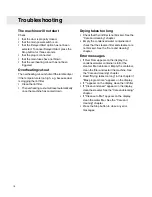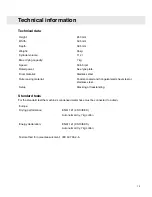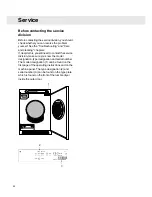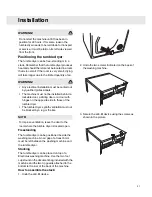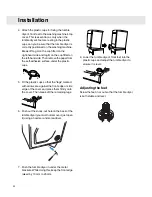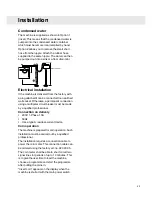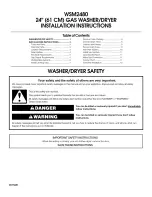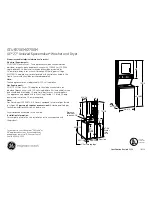
Here are some tips that may help you before you
begin tumble-drying.
Have the clothes been spun?
Items to be tumble-dried should be spun at 1000
rpm or faster. Higher spin speeds save energy
and reduce drying time.
Materials that can be tumble-dried
This symbol means that the material is suitable
for tumble-drying. Fabrics best suited to
tumble-drying are cotton fabrics, terry cloth and
synthetic fibres. Garments will be softer and lighter
when tumbled than when hung out to dry.
NOTE!
The tumble dryer does not cause any significant
wear on fabrics. The lint that collects in the lint
filter consists of dust and fibre residues formed
when the items are used.
Materials that must not be
tumble-dried
This symbol means that the material is not
suitable for tumble-drying. Certain materials may
melt or become a fire hazard if exposed to heat,
and others can lose their shape or shrink.
And do not tumble-dry
• materials labelled "Do not dry near heat".
• garments that have been dry-cleaned at home.
• plastic foam.
• fibreglass material.
• wool must not be tumble-dried because of the
risk of felting.
Static electricity
To reduce the risk of static electricity in the laundry
after tumble drying you can:
• Use fabric softener when washing.
• Wait five minutes after the drying program ends
before opening the door and removing the
laundry from the dryer.
NOTE!
You can stop the tumble dryer by pressing the
Stop button for three seconds or by opening the
door. In both cases the programme is stopped
and starts from the beginning if restarted.
If you do not want to restart the programme then
immediately remove all laundry and spread it out
to allow the heat to dissipate.
8
Advice and tips before you tumble-dry
Содержание TW SL3 M100
Страница 17: ...clean and cool dust heat and moisture prolong drying times 17 Care and cleaning ...
Страница 26: ...26 Your notes ...
Страница 27: ...27 Your notes ...


















